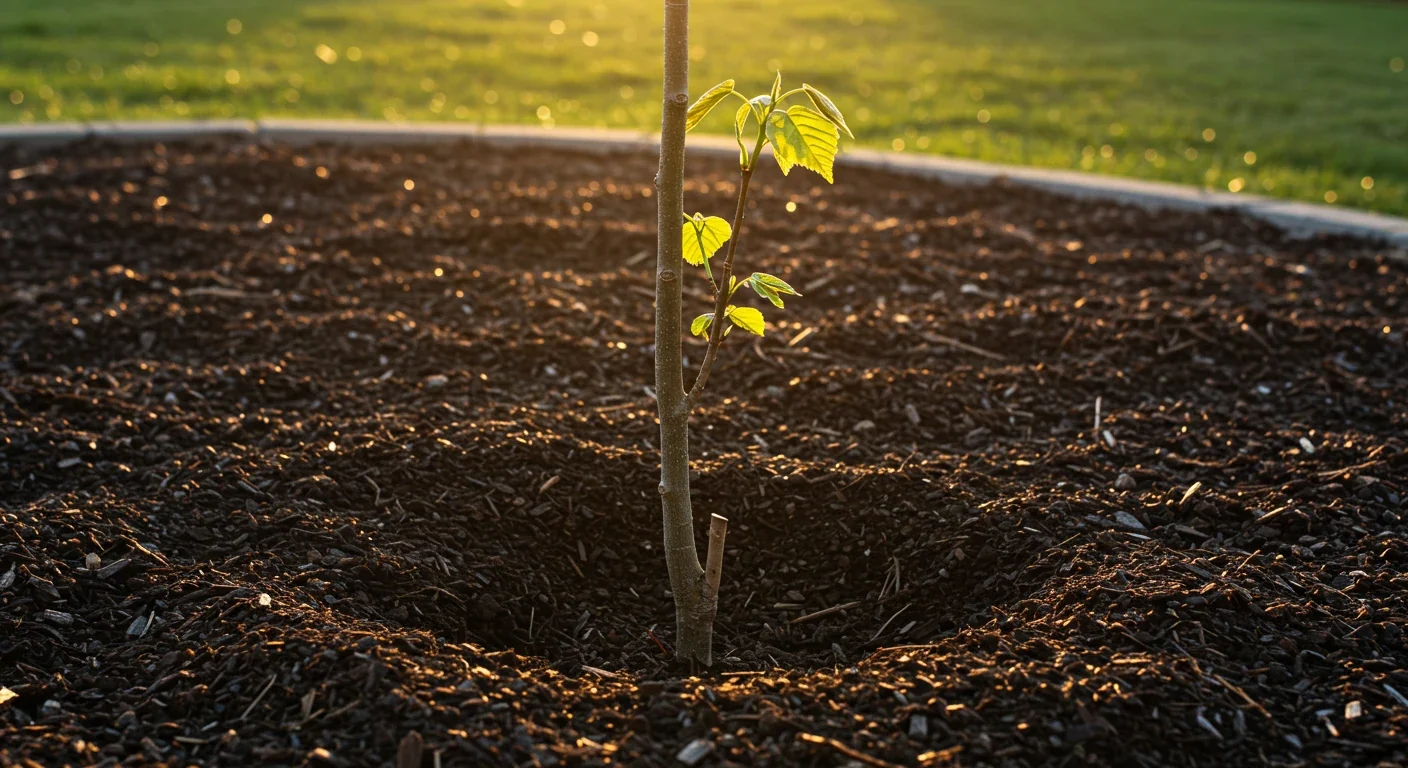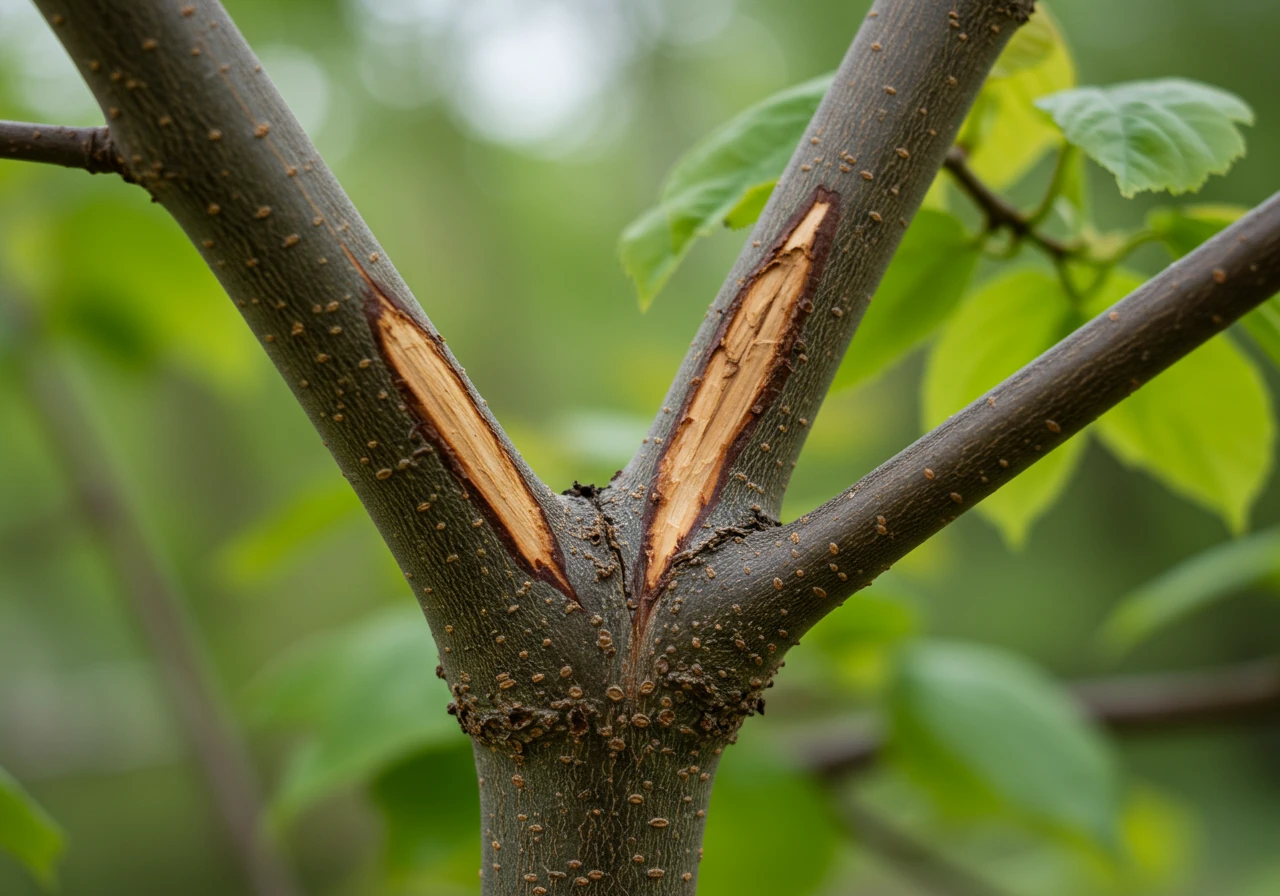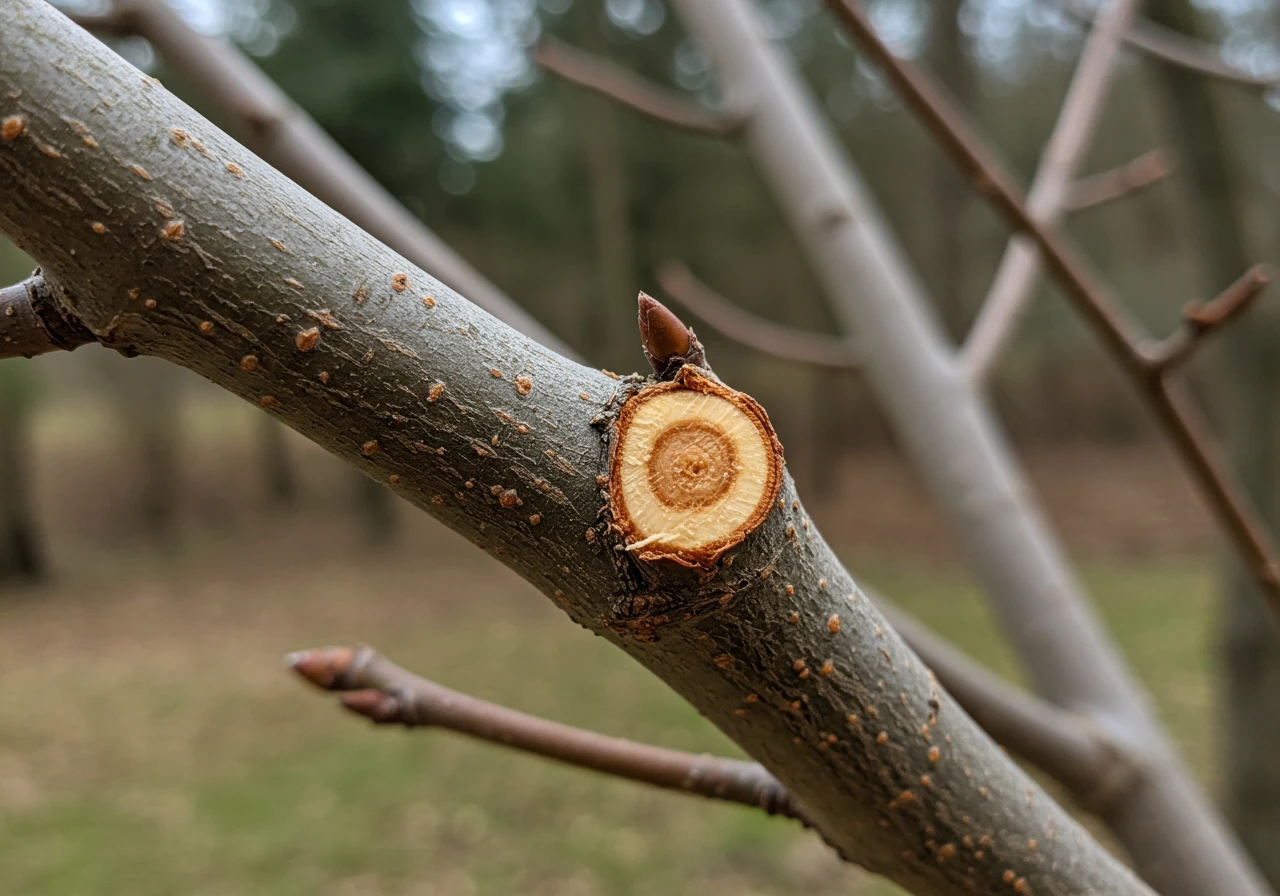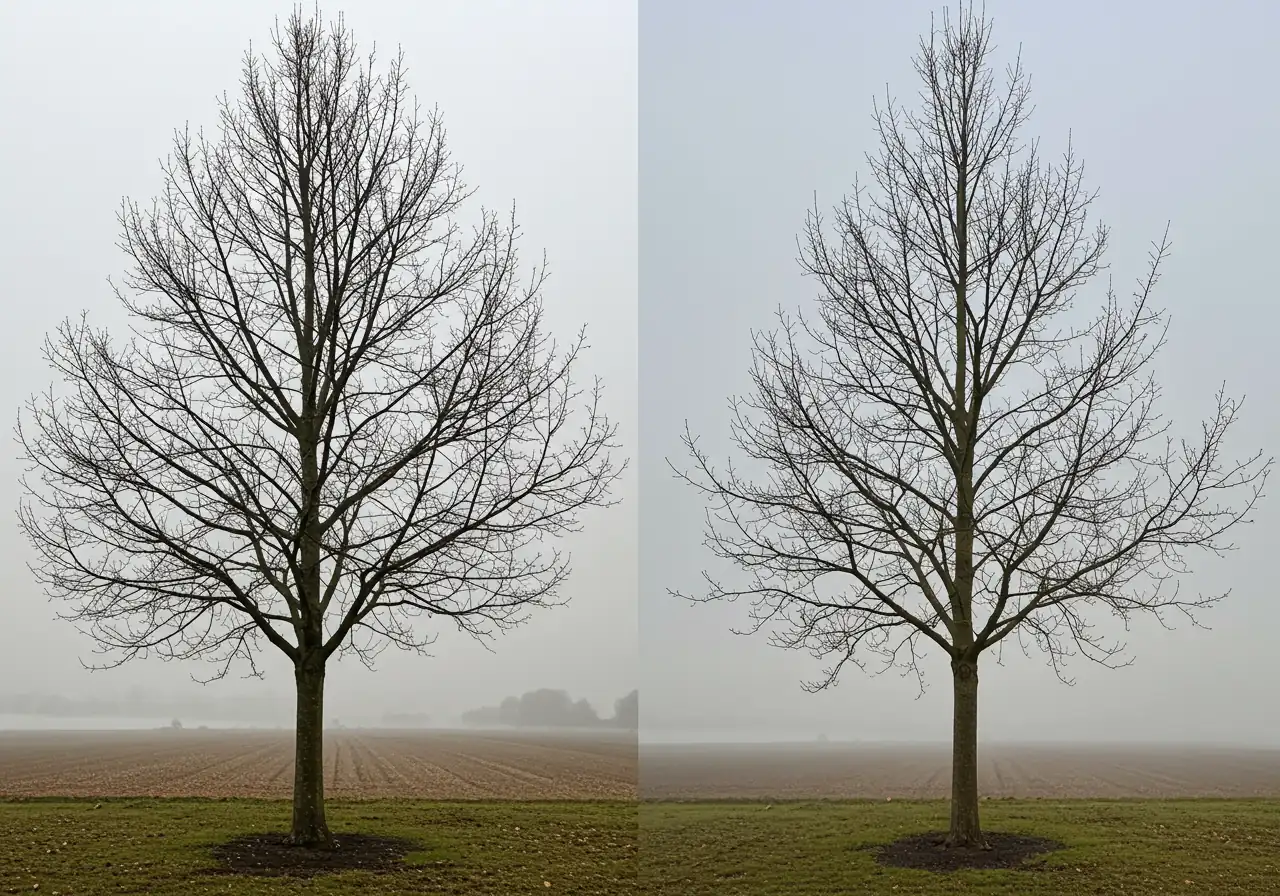Shape Young Nepean Trees: Expert Structural Pruning Tips
Quick Guide to Structural Pruning:
- Structural pruning guides young trees (first few years) to develop strong trunks and well-spaced branches.
- Best done during dormancy (late fall to early spring) when structure is visible.
- Focus on removing dead/damaged/crossing branches and establishing a single central leader.
- Use sharp, clean tools and make cuts just outside the branch collar.
- Avoid removing more than 25% of the canopy at once.
- Prevents future storm damage, hazards, and costly repairs.
Ensure your young trees grow strong and beautiful. Need expert help? Get a free quote today!
Request a Free QuoteIntroduction: Give Your Young Nepean Trees the Best Start!
Hey Nepean neighbours! So, you've planted a new tree – fantastic! Adding green to our local landscape is always a win. Whether you're watching a sapling take root in Barrhaven, nurturing a young maple in Greely, or enjoying a new addition right here in Nepean, you dream of it growing tall, strong, and beautiful, right? Of course! But just like rambunctious kids sometimes need a gentle nudge in the right direction (and maybe shouldn't wear *that* outfit), young trees benefit hugely from some early guidance. That's where the magic of structural pruning comes in.

Sounds fancy, but what is it really? Don't worry, it's not complicated gardening wizardry. Think of it less like giving your tree a drastic, weird teenage haircut and more like setting it up for a lifetime of success and good looks. Structural pruning is simply the practice of making small, selective cuts on a young tree (usually within the first few years after planting) to encourage a strong main trunk (we call that a central leader) and well-spaced, sturdy branches pointing in the right directions.
It’s all about building a solid framework early on. Why bother? Especially here in the Ottawa area, a well-structured tree is much better equipped to handle our sometimes-wild weather – think heavy snow loads and gusty winds. Getting this right in its youth means a healthier, safer, and more attractive tree for decades to come, preventing weak spots, crossing branches, and potential hazards down the road. Stick with us, and we'll dive into how this essential task prevents big problems later!
For more inspiration on landscape shaping, check out these ideas for Nepean Topiary Art.
Why Bother Pruning Young Trees? (Hint: It's Not Just About Looks!)

Okay, let's talk about those young trees you've lovingly planted. You see a cute little sapling, and the idea of taking sharp tools to it might seem, well, a bit harsh! Isn't it best to just let nature do its thing? While that sounds nice, giving young trees some early guidance through structural pruning is one of the best investments you can make for their future. Think of it like teaching a kid good manners – much easier early on than trying to fix bad habits later! It's about way more than just looking tidy. Here’s why bothering now saves you headaches (and potentially heartaches) down the road:
Question: My young tree looks perfectly fine right now. Why should I prune it?
Answer: Ah, the "if it ain't broke, don't fix it" approach! But with young trees, we're looking ahead. Right now, small structural issues might not be obvious. Things like branches crossing and rubbing (which creates wounds), branches growing too close together (leading to weak attachments), or multiple "main stems" competing for dominance (creating a weak point) are easier to fix when the tree is young and the branches are small. Correcting these early helps the tree build a strong, single trunk and well-spaced branches. This structure is essential for handling the heavy snow and gusty winds we often see around Ottawa and surrounding areas like Metcalfe. Ignoring this now can lead to major branch failure during a storm later. Learning about proper winter pruning techniques can highlight how important structure is for weather resilience.
Question: Won't cutting branches harm my small, vulnerable tree?
Answer: It’s totally understandable to worry about hurting your little green buddy! But here’s the key: structural pruning involves making small, selective cuts. Young trees heal from these small wounds much faster and more effectively than older trees heal from the large cuts often needed to fix problems left unaddressed for years. Think of it like removing a tiny splinter versus needing major surgery later. These small, early cuts minimize stress and direct the tree's energy into building that strong framework we talked about. Proper pruning is actually vital for long-term plant health, helping prevent disease entry points and promoting good air circulation through the canopy.
Question: Pruning sounds like an extra chore and maybe an extra cost. Does it *really* save money?
Answer: Absolutely! It might seem like an upfront task or cost if you hire professionals, but compare that to the potential costs down the line. A tree with poor structure is far more likely to suffer storm damage, requiring expensive emergency tree work or removal. Weak branches can become safety hazards, potentially damaging property or causing injury. Poorly structured trees can also be more susceptible to pests and diseases, leading to treatment costs. Investing a little time or money in structural pruning now is truly cost-effective, preventing the need for extensive property cleanup or hazardous limb removal later. You can see feedback on our estimates here.
Question: I just want my tree to look natural, not sculpted. Will pruning make it look weird?
Answer: Great question! Structural pruning is not about forcing a tree into an unnatural shape like topiary. In fact, it's the opposite! Its goal is to encourage the tree's natural form by removing potentially problematic branches and promoting a strong central leader. This results in a tree that looks balanced, grows strong, and fits beautifully into your landscape for the long haul. It enhances its inherent beauty and health, rather than drastically altering its appearance. While we appreciate intricate designs, structural pruning is more foundational – though understanding summer shrub shaping tips useful in Osgoode shows how different types of trimming achieve different goals. If you're unsure how to start, exploring our range of landscaping services can connect you with experts who understand how to prune for long-term health and beauty.
Get Professional Help With Tree PruningTiming is Everything: When to Prune Young Trees in the Ottawa Climate
Okay, let's talk timing! When it comes to pruning those young trees, getting the timing right here in the Ottawa region is almost as important as making the cut itself. Think of it like trying to host a backyard BBQ in Barrhaven during a February blizzard – poor timing leads to less-than-ideal results! For most young trees, the best time for structural pruning is during their dormant season.
The Magic of Dormancy (Late Fall to Early Spring)
Why then? Great question! Here’s the scoop:
- See Everything Clearly: Once the leaves drop in late fall, you can actually see the tree's structure – the trunk, the branches, where things might be crossing or looking a bit wonky. It’s like trying to untangle holiday lights; much easier when you can see all the wires!
- Less Stress for the Tree: In winter, the tree is resting. Pruning during dormancy is less shocking to its system compared to cutting it when it's actively growing in spring or summer.
- Pest and Disease Break: Many annoying insects and diseases are also dormant or inactive in the cold. Pruning during this time significantly reduces the chance of attracting these unwanted guests to the fresh cuts. Check resources from the Ontario Invasive Plant Council for info on local pests.
- Ready for Spring Growth: Making cuts in late winter or very early spring means the wounds are fresh just as the tree directs energy into bursting with growth. This helps the cuts seal over quickly.
Ottawa's Winter Quirks: The Freeze-Thaw Factor
Now, we all know Ottawa winters aren't just consistently cold; they love throwing freeze-thaw cycles at us! While dormancy is key, try to avoid pruning during the absolute coldest snaps (think below -15°C or so). Wood can become very brittle and might not cut cleanly. Similarly, pruning right before a major temperature drop isn't ideal. Late winter (February/March) before the buds swell is often the sweet spot for many deciduous trees in our area. It avoids the deepest cold and gives the tree time to prepare for spring growth. Remember, a healthy tree starts from the ground up; ensuring good soil preparation techniques when planting also helps your tree handle pruning stress.
Ideal Pruning Timeline for Young Deciduous Trees in Ottawa:
Late Fall (Nov)
Leaves have dropped. Good visibility of structure begins. Initial light pruning possible.
Mid-Winter (Dec-Jan)
Tree fully dormant. Pruning okay, but avoid extreme cold snaps (below -15°C).
Late Winter (Feb-Mar)
Optimal Period! Tree still dormant, avoids deepest cold, wounds heal fast with spring growth. Ideal for structural cuts.
Early Spring (Apr)
Buds swelling/breaking. Pruning possible but may cause sap bleeding (Maples, Birches). Avoid pruning Oaks now.
Are There Exceptions? Always!
Gardening wouldn't be fun without a few curveballs, right?
- Oak Trees: If you have oak trees, perhaps out near Kars or Winchester, listen up! To prevent the spread of a serious disease called Oak Wilt, only prune oaks during the coldest part of dormancy (usually November to March). Never prune oaks during the growing season (April to October). More info can often be found via resources like the Rideau Valley Conservation Authority.
- "Bleeders" (Maples, Birches): These trees tend to ooze a lot of sap if pruned in late winter/early spring as sap pressure builds. It looks dramatic but generally doesn't harm the tree. If it bothers you, you can do light structural pruning on these in late summer, but dormant pruning is still often preferred for major structural work.
- Spring-Flowering Trees: If your main goal is maximum flower power on something like a magnolia or serviceberry, you might wait to prune until just after it flowers. However, for young trees, establishing good structure is often more critical than a few initial blooms, so dormant pruning is still generally recommended.
- Dead, Damaged, or Dangerous: The 3 D's! If you see branches that are clearly dead, broken from a storm, or pose a safety risk, you can (and should) remove these anytime you spot them. Neglected trees might require more significant work; sometimes a thorough Ottawa property cleanup service is needed before even assessing pruning needs. Tidying up the debris after pruning is also important – think of it like the final step in any good yard maintenance, similar to the yard cleanup services offered in Marionville.
Actionable Tip: Consider adding a "Check Young Trees for Pruning" reminder to your phone or calendar for late February or early March. It’s an easy way to stay on top of this important task! Keeping the area around your young tree tidy also helps, much like the general city property cleanup service maintains order.
Feeling a bit unsure about when or what to cut? Totally understandable! It’s better to be cautious. You can always reach out to us for advice. We base our recommendations on experience, and you can even see what others think by checking out our client estimate feedback. Getting the timing right sets your young tree up for a long and healthy life in our beautiful Ottawa landscape.
How to Structurally Prune Young Trees: A Step-by-Step Guide (Don't Worry, It's Easier Than Assembling IKEA Furniture!)
Okay, deep breath! You've decided to give your young tree some structural TLC. Fantastic! It might seem daunting, but trust us, figuring out these cuts is often way less frustrating than deciphering those cryptic instructions for Swedish furniture. Here’s how to tackle structural pruning, step-by-step:

Step 1: Gear Up! (The Right Tools for the Job)
Before you start channeling your inner landscaper, make sure you have the right tools. You don't need a massive arsenal, just a few key items:
- Sharp Hand Pruners (Secateurs): Perfect for small branches, typically up to ½ inch thick. Bypass pruners (with one sharp blade passing by a thicker base) make cleaner cuts than anvil types (which crush).
- Loppers: For branches between ½ inch and 1 ½ inches thick. Their long handles give you extra leverage.
- Pruning Saw: Needed for branches thicker than 1 ½ inches. Choose one designed for green wood.
Crucial Tip: Whatever tool you use, make sure it's clean and sharp. Clean tools prevent spreading disease, and sharp tools make clean cuts that heal faster. Wipe blades down with rubbing alcohol or a bleach solution (1 part bleach to 9 parts water) between trees, or even between cuts if you suspect disease. Using quality tools makes a difference, much like thoughtful material selection for landscaping projects.
Step 2: Size Up Your Tree (Observe Before You Cut)
Take a few steps back. Walk around your tree. Look at it from different angles. Does it look balanced? Can you identify a single main trunk going up the center (the central leader)? Are branches evenly spaced, or are they all crowded together? Imagine the tree fully grown – where might problems develop? This initial assessment, perhaps while enjoying your Manotick backyard view, is key before making any cuts.
Step 3: Prioritize Your Cuts (The Pruning Hit List)
Don't just start snipping randomly! Focus on removing branches in this order of importance (remember the "5 D's"):
- Dead, Diseased, Damaged, or Dying: These are no-brainers. They’re not helping the tree and can be entry points for pests and decay. Remove them first.
- Deranged (Crossing or Rubbing Branches): Branches that cross and rub against each other create wounds and weak points. Remove the less desirable or poorly positioned branch of the pair.
Step 4: Find the Leader! (Encouraging the Main Stem)
Most young trees should ideally have one strong, upright central stem called the "leader." Sometimes, trees develop "co-dominant stems" – two competing leaders that form a weak V-shaped junction, prone to splitting later. If you see this:
- Identify the strongest, most upright stem to be your chosen leader.
- Remove the competing stem(s) completely.
- If removing the competitor would take out too much canopy at once (see Step 7), you can "subordinate" it by shortening it significantly. This tells the tree, "Hey, focus your energy on the other stem!"
Step 5: Space Things Out (Selecting Scaffold Branches)
Now, look at the remaining branches (the "scaffold" branches that form the tree's main structure). You want branches that are:
- Well-spaced vertically: Aim for about 6-12 inches or more between major branches along the trunk, depending on the mature size of the tree.
- Well-distributed radially: Imagine looking down from above – branches should ideally radiate out in different directions like spokes on a wheel, not all bunched on one side.
- Strongly attached: Branches with wide angles of attachment (more like an "L" than a "V") are stronger. Remove branches with very narrow V-shaped attachments to the trunk if possible.
Remove branches that are too close together or growing inward towards the center of the tree.
Step 6: Make the Cut (Proper Technique Matters!)
Okay, you've identified a branch to remove. Here's how to cut it correctly:
- Small Branches (Hand Pruners/Loppers): Cut just outside the branch collar. This is the slightly swollen area where the branch joins the trunk or a larger branch. Do not cut flush with the trunk, and do not leave a long stub. The branch collar contains special cells that help the tree seal the wound quickly.
- Larger Branches (Pruning Saw - The 3-Cut Method): To prevent the branch from tearing the bark as it falls (which creates a large wound), use three cuts:
- Undercut: About 6-12 inches out from the trunk, cut partway up through the bottom of the branch.
- Removal Cut: A bit further out from the undercut, cut all the way through the branch from the top. The branch will fall safely.
- Final Cut: Now make the final cut just outside the branch collar, removing the remaining stub.
Step 7: Know When to Stop (Don't Go Overboard!)
It can be tempting to "perfect" the tree all at once, but resist the urge! As a general rule, never remove more than 25% of the tree's live canopy in a single year. Over-pruning stresses the tree. Structural pruning is a process done over several years. Make the most important cuts now and plan to revisit next dormant season.
Step 8: Tidy Up (The Eco-Friendly Finish)
Don't leave pruned branches lying around. In greener Ottawa neighbourhoods like Greely or Kenmore, make use of the municipal green bin program for smaller twigs and branches (check City of Ottawa Green Bin rules). Larger branches might need to be bundled according to city guidelines, composted if you have the space, or chipped into mulch. If you have a significant amount of debris, or just want the job finished cleanly, consider options like a professional yard cleanup service, perhaps similar to those offered in Ottawa.
Phew! See? Not quite IKEA-level confusion! Taking these steps will set your young tree up for a strong, healthy future. Good structural pruning supports overall tree health, which perfectly complements other aspects of a thriving landscape, such as consistent lawn care practices and the application of beneficial mulching and edging around the tree's base (keeping mulch away from the trunk itself, of course!).
If you read through this and still feel unsure, that's okay! It's always better to be cautious. You can learn more about us and our professional approach to tree care. Remember, safety and the long-term health of your tree are the top priorities. When using resources or contacting services online, it's always wise to be aware of site terms, like our Privacy Policy. Happy pruning!
Common Structural Pruning Mistakes (And How to Avoid Them in Your Nepean Yard)

Alright Nepean neighbours, let's chat about a few common oops moments when it comes to structural pruning. We all mean well, but sometimes our enthusiasm (or maybe just a misunderstanding) can lead to less-than-stellar results for our young trees. Think of this as the "What Not to Wear" guide for tree trimming! Avoiding these pitfalls helps ensure your trees grow strong and healthy, ready to handle whatever Ottawa weather throws their way, whether you're in Nepean, Russell, or Embrun.
Here are some frequent flubs and why they're problematic:
- The Dreaded Topping: This is probably the biggest no-no. Topping means cutting off the main vertical stem(s) and large branches indiscriminately, usually to control height. Why it's bad: It creates ugly stubs, stimulates a weak burst of bushy growth prone to breaking, and opens the tree up to decay and disease. Topped trees often become hazardous down the road, potentially requiring major intervention like an Ottawa property cleanup service after storm damage. Avoid it by: Using proper thinning cuts or reduction cuts back to a suitable lateral branch if height control is *absolutely* necessary on a mature tree (structural pruning focuses on *young* trees to prevent this need!).
- Flush Cuts (Cutting Too Close): This involves removing a branch right against the trunk, cutting into or removing the slightly swollen branch collar. Why it's bad: The branch collar contains specialized cells that seal off the wound. Removing it creates a larger wound that heals slowly, if at all, inviting decay right into the trunk. Think of it like removing a scab – not helpful for healing! Proper technique is key to long-term health, a principle shared by meticulous services like an Ottawa garden clean up service. Avoid it by: Always locating the branch collar and cutting just outside of it.
- Over-Pruning (Too Much, Too Soon): Getting carried away and removing more than 25-30% of the live canopy in one go. Why it's bad: Leaves are the tree's food factories. Removing too many stresses the tree, reduces its energy reserves, and can make it vulnerable to pests and disease. It's like trying to run a marathon after skipping meals for a week! Careful planning, just like in a beautiful garden install, is crucial. Avoid it by: Prioritizing the most necessary cuts (dead, damaged, crossing) and spreading structural pruning over 2-3 years if needed. Many beautiful landscape transformations involve patient plant care.
- Using Dull or Dirty Tools: Hacking away with blunt pruners or spreading disease with contaminated blades. Why it's bad: Dull tools crush stems and create ragged wounds that heal poorly. Dirty tools can easily transfer fungal spores or bacteria from one tree to another. It's basic hygiene for plants – just as we take steps to protect your information (view our Privacy Policy), take steps to protect your trees! Avoid it by: Sharpening tools regularly and cleaning them with rubbing alcohol or bleach solution between trees.
- Ignoring Co-dominant Stems: Letting two or more competing main stems grow with narrow, V-shaped attachments. Why it's bad: These junctions are notoriously weak points. As the stems grow thicker, they push against each other, often trapping bark inside (called included bark), further weakening the union. This is a major cause of tree failure during high winds or heavy snow/ice loads – a serious concern in our Ottawa climate, potentially creating hazards near sidewalks or requiring a city property cleanup service. Avoid it by: Identifying and removing or subordinating (shortening) competing leaders early in the tree's life.
- Wrong Timing: Pruning oaks during the growing season, or pruning heavily when the tree is stressed (like during drought). Why it's bad: Pruning oaks from April to October drastically increases the risk of deadly Oak Wilt. Pruning stressed trees adds more strain. Even the simple act of tidying up after pruning is best done promptly, similar to how a focused Marionville garden clean up service leaves things neat. Avoid it by: Sticking to dormant season pruning for most trees (with specific exceptions like Oak Wilt prevention timing) and avoiding heavy pruning during stress periods. Proper garden maintenance includes respecting plant cycles.
Keeping these common mistakes in mind can make a huge difference. You could even make a little comparison chart for yourself: Mistake vs. Best Practice. By using the right techniques at the right time, you’ll be giving your Nepean trees the best possible start!
Impact of Structural Pruning (Conceptual)
Chart represents estimated long-term structural integrity.
Related Pruning Concepts
Thinning Cuts
These remove an entire branch back to its point of origin on the trunk or a larger parent branch. Used to reduce density, remove crossing branches, or eliminate weak branches without changing the overall shape significantly. Crucial for improving light penetration and air circulation.
Reduction Cuts
Shortens a branch back to a smaller lateral branch (at least one-third the diameter of the removed portion). Used to reduce the height or spread of a tree or limb while maintaining a more natural appearance than topping. The remaining lateral branch takes over as the new terminal leader for that stem.
Subordinating Cuts
A type of reduction cut specifically used to slow the growth of one competing leader in favour of another. By shortening the less desirable leader, you direct more energy to the chosen main leader, encouraging it to become dominant without removing the competing stem entirely in one go.
Key Insights: Quick Tips for Thriving Young Trees
Think of this as your cheat sheet for helping young trees become strong, leafy superheroes in your yard! Getting structural pruning right early on saves a world of trouble later. Here are the big takeaways:
- Give your young trees a strong start! Early structural pruning builds resilience for Ottawa weather, whether you're enjoying the greenery in Barrhaven or out near Metcalfe. It's easier to guide growth now than fix big problems later.
- Focus first on removing the obvious problems: Dead, Damaged, Diseased, or Crossing branches (think of them as the tree's troublemakers!).
- Aim for one strong central leader or main trunk. Gently encourage this by removing or shortening competing stems while the tree is young.
- Timing matters! Late winter or very early spring, when the tree is dormant (but maybe not during a deep freeze!), is usually the best time for these structural adjustments.
- Use sharp, clean tools! Make your cuts just outside the swollen branch collar – avoid leaving stubs or cutting flush against the trunk. Clean cuts heal faster.
- Easy does it! Resist the urge to prune too much at once. As a rule of thumb, never remove more than 25% of the tree's live branches in a single year. Patience is key in landscaping!
- Remember, good pruning prevents costly storm damage and hazards, reducing the chance you'll need major property clean up after a storm down the road.
- Tidiness helps your tree thrive! Clearing pruned debris and keeping the base clear complements overall yard health, similar to how an Marionville property cleanup service maintains a neat space. Even small pruning cleanups echo the thoroughness of a dedicated Metcalfe garden clean up service.
- Investing in this early tree care supports your entire gardening vision, whether that includes planning a beautiful garden installation or simply avoiding future large-scale work that might require a professional city garden clean up service. Check out our Google Business Profile for reviews!
Follow these tips, and you'll be well on your way to raising healthy, happy trees that grace our Ottawa neighbourhoods for years to come!
Frequently Asked Questions (FAQs) for Nepean Tree Owners
That's great you're thinking ahead! It's usually best to let your new tree settle in and establish its roots for a year or two after planting. Think of it as letting it unpack its bags before you start rearranging the furniture. Once it’s looking comfortable and growing well (typically by the second or third dormant season after planting), that’s the ideal time to begin making those small, corrective structural cuts to guide its growth. Good root establishment is vital, similar to the care taken during sod installation.
Yes, some definitely benefit more from early guidance! For instance, many Maples love to send up multiple competing main stems (co-dominant leaders). Pruning early helps encourage a single, strong trunk, which is much better for the tree's long-term health. Ornamental trees like Crabapples can also quickly develop crowded or crossing branches. Giving them a little structural attention early on is a key part of good landscaping practice and helps them develop into handsome specimens.
It might seem like removing branches would weaken a tree, but proper structural pruning actually does the opposite! By removing poorly attached branches, crossing limbs, and encouraging a strong central structure, you're making the tree more resilient. It helps prevent weak spots where snow and ice can accumulate or where strong winds can cause branches to split or fail later on. A well-structured tree is a safer tree in our sometimes-feisty climate. The Tree Ottawa initiative also promotes healthy urban forests.
Good question! For minor pruning on small, young trees located entirely on your own private property, you generally don't need a permit. However, the City of Ottawa does have tree protection by-laws that apply to larger trees (based on trunk diameter), specific situations (like trees near construction), or certain protected species. It's always wise to double-check the City's Trees and Forests page for the latest rules if you're unsure, especially before removing a tree or doing major work. Similarly, when using any service or website, understanding the guidelines is important; feel free to review our site Terms and Conditions for our operational policies.
Take a deep breath – it's probably just fine! It’s very normal for a young tree to look a little sparse immediately after structural pruning. Remember, you likely removed branches that *would* have caused crowding, rubbing, or weak points down the road. The goal right now isn't maximum leafiness, but building that strong, lasting framework. Give it some time; the remaining branches will grow, and the canopy will fill in nicely. We think it's great you're investing in your tree's future – thank you for contributing to Nepean's green canopy!
Excellent follow-through! Proper cleanup is part of the gardening process. For smaller twigs and branches, your City of Ottawa green bin is usually the easiest solution. Check the City's guidelines for bundling larger branches if needed. If you've tackled a few trees or have a significant amount of debris, you might consider professional help. Various companies offer everything from a focused City Yard Cleanup Service to more comprehensive City Garden Maintenance Service that can include debris removal. Even residents in nearby areas have options, like utilizing a Metcalf Property Cleanup Service for assistance. Tidying up leaves your yard looking neat and prevents pests from making homes in brush piles.
Conclusion: Shape the Future of Your Nepean Landscape
So there you have it! Giving your young trees a little structural guidance isn't just another garden chore; it’s like being a landscape visionary for your own Nepean property. You're literally shaping a stronger, safer, and more beautiful future for your trees, helping them stand tall against Ottawa's wilder weather whims for decades to come. Think of the gorgeous, healthy canopy you're nurturing, whether you're in central Nepean, leafy Greely, or enjoying the green spaces near Manotick!
Taking those first steps in structural pruning really is achievable for most young trees. It’s about making small, smart choices now to prevent big headaches later – like avoiding those awkward, weak branches that just seem to scream "future storm damage." You're setting your tree up for a long, successful life contributing to our local environment.
Ready to play tree architect?
- Take five & assess: Grab this guide, head outside, and really look at your young trees. Can you spot a strong central leader? See any branches rubbing shoulders awkwardly? You might be surprised what you notice!
- Feeling unsure or short on time? Hey, no shame in calling in the cavalry! Sometimes it’s best to get an expert eye. If you're hesitant, have several trees needing attention, or just want the peace of mind that comes with professional pruning, we're here to help craft that perfect structure.
Investing a little time now, either doing it yourself or bringing in professional help, means enjoying a healthier, more resilient, and stunning green legacy right in your own backyard. Let's grow something great together!
Contact Us for Expert Pruning Services
